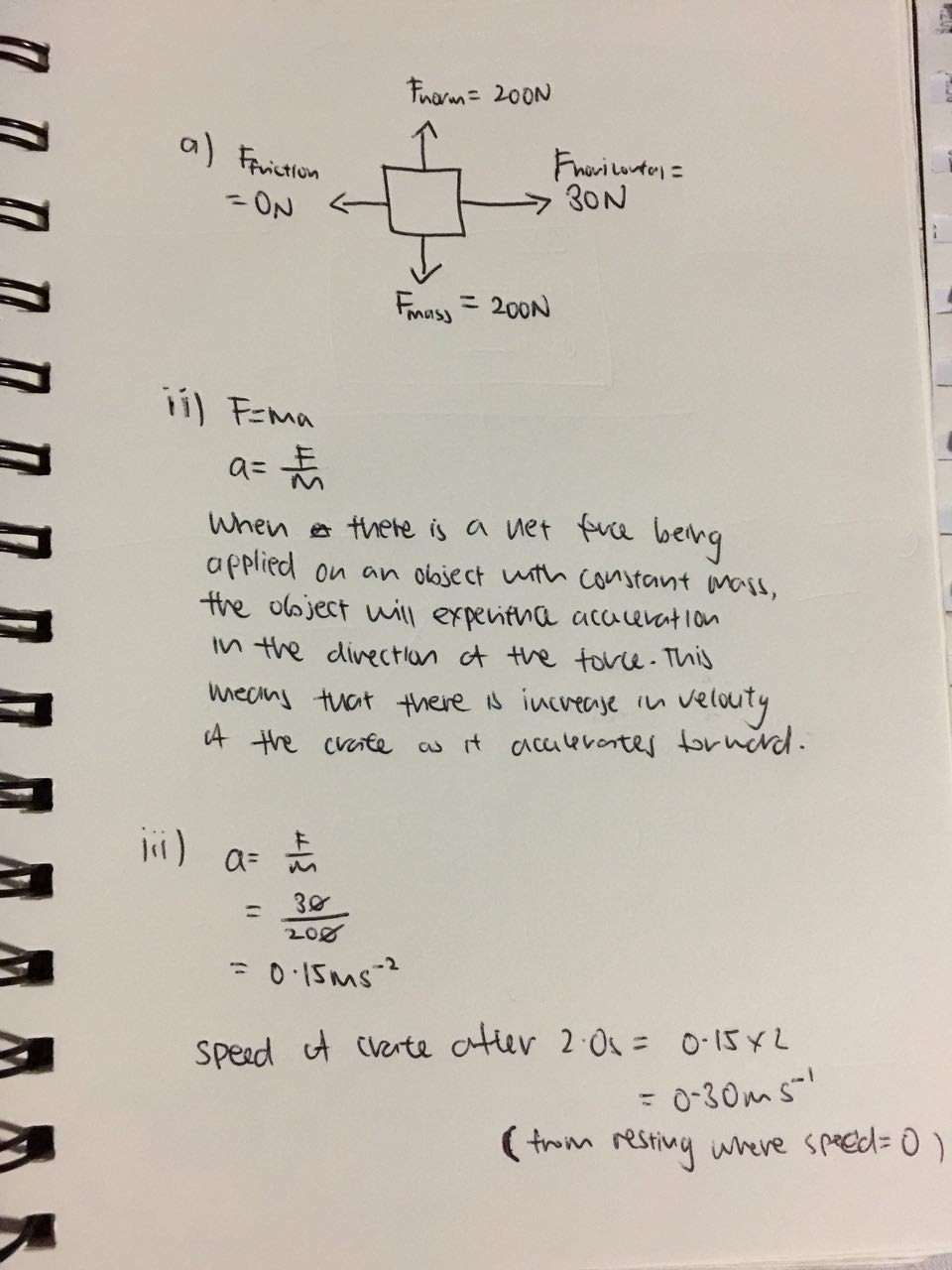Christmas MT's answer to Luna Cie's Secondary 3 Physics question.
done
{{ upvoteCount }} Upvotes
clear
{{ downvoteCount * -1 }} Downvotes

ai) The object is resting on ice, so while there is a downward force (mass) of 200N, there is an equal upward force (normal) of 200N. Forward force (horizontal) is 30N applied by the boy. Assume backward force (friction) to be 0N because the surface is on ice. Negligible friction.
ii) Use the second law of motion F=ma to explain how acceleration came about and how acceleration is a change in velocity per unit time.
iii) Using the same F=ma formula, manipulate it such that a is the subject and input the appropriate values for F and m to derive the acceleration of the crate. F would be the forward force by the boy of 30N. m would be the mass of the crate of 200N.
acceleration is 0.15ms^-2 which means increase of speed by 0.15m/s every second. Acceleration remains constant as long as the F and m remains constant. The velocity, however, increases proportionally with time due to the acceleration.
Since there is 2 seconds of acceleration of 0.15ms^-2 from the initial speed of 0ms^-1 (at rest), the velocity after 2 seconds is (initial velocity + (time x acceleration) = 0+ 2 x 0.15 = 0.30 ms^-1
Hope this helps!
ii) Use the second law of motion F=ma to explain how acceleration came about and how acceleration is a change in velocity per unit time.
iii) Using the same F=ma formula, manipulate it such that a is the subject and input the appropriate values for F and m to derive the acceleration of the crate. F would be the forward force by the boy of 30N. m would be the mass of the crate of 200N.
acceleration is 0.15ms^-2 which means increase of speed by 0.15m/s every second. Acceleration remains constant as long as the F and m remains constant. The velocity, however, increases proportionally with time due to the acceleration.
Since there is 2 seconds of acceleration of 0.15ms^-2 from the initial speed of 0ms^-1 (at rest), the velocity after 2 seconds is (initial velocity + (time x acceleration) = 0+ 2 x 0.15 = 0.30 ms^-1
Hope this helps!
Date Posted:
7 years ago

